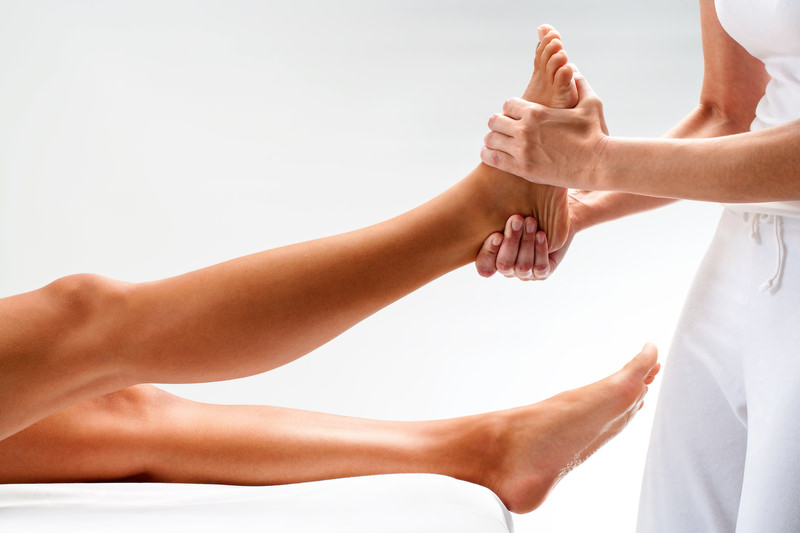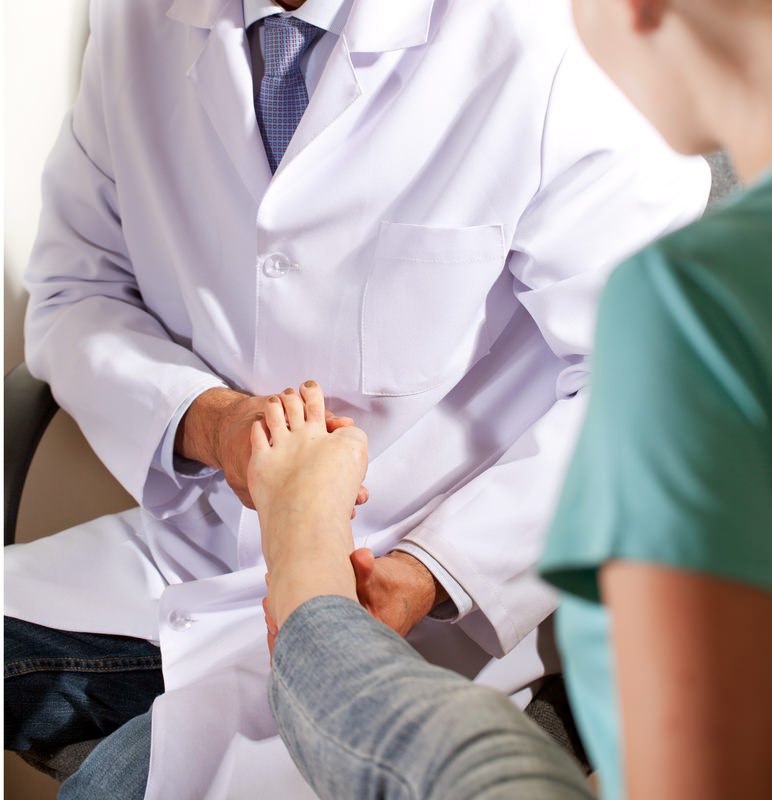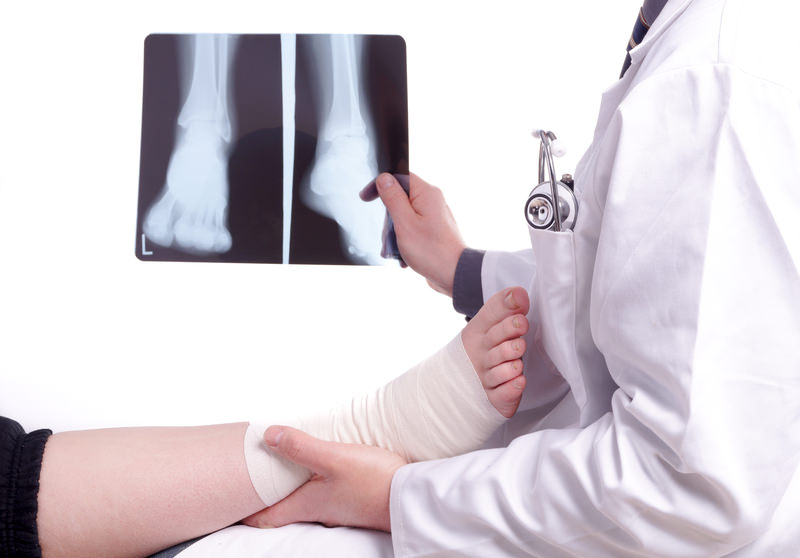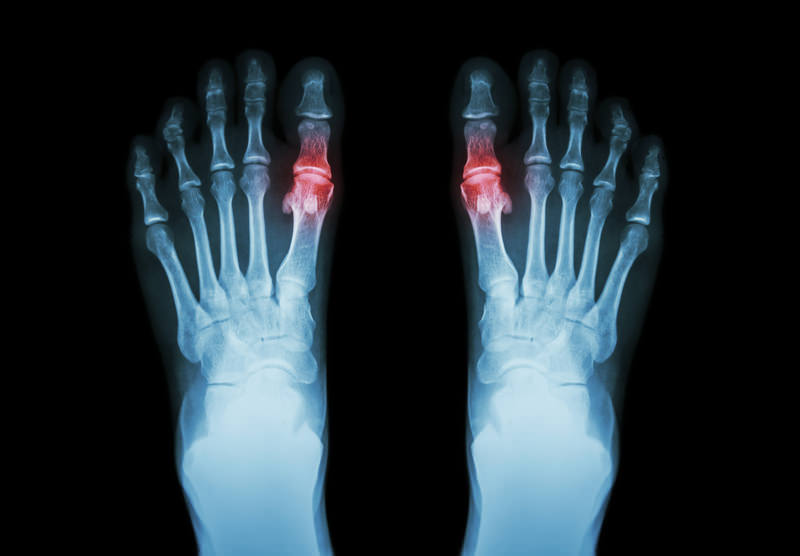If you are experiencing any foot and ankle concerns, consider scheduling an appointment with our top Los Angeles podiatrist.
Our feet take a lot of abuse on a daily basis. Our feet work hard to carry us around, we stand on our feet for hours each day, and we squeeze our feet into ill-fitting shoes. That doesn’t even take into consideration the damage to our feet caused by sports injuries and health conditions. It is no wonder that approximately 90 percent of people suffer some type of foot problem during their lifetime.
What is a Podiatrist?
The foot contains 33 joints, 26 bones, and numerous blood vessels, nerves, and tendons. A problem with any part of that structure can interfere with our ability to walk and our independence. A podiatrist is a medical professional specializing in diagnosing and treating conditions affecting the feet, ankles, and lower leg. Podiatrists work in hospitals, clinics, and private practices. Our Los Angeles podiatrist is able to recommend a variety of surgical, non-surgical, and preventative measures to help patients maintain the health of their feet.
Foot Conditions Requiring a Podiatrist:
Certain minor foot issues can sometimes be treated at home with over-the-counter remedies, ice, heat, or rest. If symptoms persist or worsen in spite of home treatment, it may be time to consult a podiatrist. The following are common foot conditions that typically require treatment by a medical professional:
- Pain in the foot, ankle, or lower leg. Leg and foot pain can be caused by a number of different conditions, including bunions, fractures, or heel spurs. A podiatrist has the training and expertise to accurately diagnose the issue and recommend appropriate treatments.
- Any type of skin irritation or discoloration can indicate serious issues, such as bacterial or fungal infection, gout, and venous or arterial blood flow issues.
- A loss of sensation in the feet, also known as neuropathy, is a frequent complication of diabetes. The condition causes burning, numbness, and tingling in the feet and must be monitored closely.
- Growths on the toes and feet can cause pain and other side effects. A podiatrist can help treat common types of foot growths, including bunions, blisters, warts, corns, and heel spurs.
- Muscle imbalances or injuries to the feet can result in flattened arches or other foot deformities. If left untreated, these deformities can lead to painful conditions, including arthritis and hammertoe.
Who is Most at Risk for Foot Problems?

- Age – As we get older, our feet naturally flatten and widen, and the natural padding on the sole of the foot begins to thin, which can lead to foot pain.
- Gender – Women have a significantly higher rate of foot problems than men. This is probably due to the fact that many women choose to wear narrow, high-heeled, and pointed-toe shoes, which can damage the feet.
- Occupation – Individuals who work in jobs that require walking long distances, extended periods of standing, or repetitive use experience a high incidence of foot problems. Common occupational foot injuries include plantar fasciitis, pinched nerves, flat feet, and tarsal tunnel syndrome.
- Pregnancy – The weight gain and hormonal changes associated with pregnancy can cause swelling and weakening of the ligaments in the feet and ankles.
- Sports – Individuals who participate in high-impact or repetitive activities, such as sports or dancing, are at higher risk for stress fractures, plantar fasciitis, heel spurs, and tendonitis.
Preventing Foot Problems with a Los Angeles Podiatrist

- Check your feet regularly. Look for changes in skin texture or color, any cracks or wounds in the feet, and any thickening or discoloration of the toenails.
- Keep your feet clean and dry.
- Trim your nails properly. Nails should be cut straight across. You should avoid cutting nails too short or on the corners or sides to prevent ingrown toenails.
- Wear shoes that fit properly. The shoe should conform to the shape of your foot, have a wide enough toe box so that your toes are not squeezed, and have a heel less than two inches.
- Wear the right shoe for your activity.
- Avoid walking barefoot since this can lead to a foot injury and infection.
- Be cautious when treating foot ailments yourself. Many over-the-counter and home remedies can make foot conditions worse.
- Don’t ignore your feet. Foot pain is not normal. If you have foot pain that persists, you should see a podiatrist as soon as possible.
- Individuals with diabetes or circulatory problems should see a podiatrist at least once a year for a checkup. They should not attempt to treat their own foot issues due to the increased risk of serious infection.
Benefits of a Podiatrist vs. General Practitioner

To schedule an appointment for an initial consultation with our Los Angeles podiatrist, contact our office today. Our medical staff provides treatments that are groundbreaking in the medical field. We place focus on minimally invasive treatment options that allow you to go back to work and resume your regular activities as quickly as possible and with minimal downtime. Feel free to ask us any questions you might have about our treatment options and how we can work with you to find out which would work best for you.















